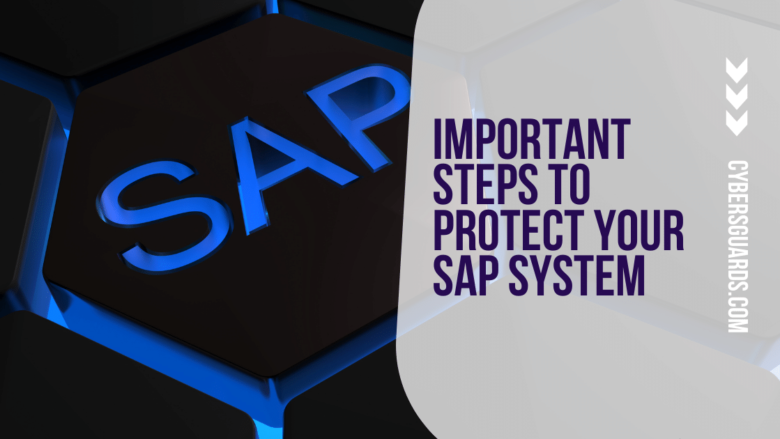In today’s companies, SAP systems have certainly changed the way business processes are managed. Systems, applications, and products (SAP) allow businesses to centralize data management and improve operational efficiency by managing complex business processes in virtually all aspects. Enabling authorized personnel to easily access relevant data accelerates work processes and reduces corporate costs.
However, just like any software, SAP systems may be subject to both external and internal cyber threats. Insufficient SAP security could compromise the business’s confidential and sensitive data or its employees and clients, which could create negative publicity and a lasting damage to the corporate image. It is therefore crucial that businesses protect their SAP system by establishing the right SAP protection. Here are 6 important steps to take for increased SAP security.
Limit user access
An essential first step to achieve increased SAP security is to determine access to the different SAP systems. By aligning user access with the role and responsibilities of each employee, access is not only appropriately limited to certain systems, but also to the necessary number of users. This makes it easier to monitor who has access to certain systems, when they have access, and for which purposes.
Once the user access to the SAP systems is accurately assigned and limited for every employee, individuals with more responsibility and therefore higher SAP risk can be identified and given a higher level of security.
SAP security training for employers
SAP protection can also be improved by providing all users with the right education and training. It’s especially critical that employees in high-risk SAP roles should receive all the necessary information to use the systems correctly to avoid, detect, and report bugs or other security threats at an early stage.
Specific trainings for all employees with access to the SAP system should be scheduled on a regular basis with a special emphasis on SAP security, data security, and risk analysis. In addition, depending on the size of your business, it may be a good idea to assign SAP security professionals within the department as the first authority for security issues.
Monitoring of SAP usage
To ensure that sensitive and confidential data in your SAP system remains protected, an additional safety step is the monitoring of SAP users. SAP systems usually provide multiple security measures themselves, such as security logs, system communications, and bug protections. However, not all cyber threats can be eliminated by the system alone. Unintentional employee errors are difficult for the SAP system to deal with.
It is therefore advisable to monitor the employees and track all movement in the SAP system. This may be done by a special SAP security team that oversees the SAP usage, runs regular security checks, and is able to react appropriately in case of a security issue.
Increase password complexity
What might seem rather obvious, but is oftentimes a very serious security issue, are insufficiently secure passwords. Easy-to-hack passwords are a prime target, especially for external cyber criminals who may harm your business by stealing sensitive data or damaging important software.
The first step is therefore to change all default account passwords in your SAP. General login passwords are easily hacked and should regularly be changed out for more complex ones. The more passwords your SAP system has and the more challenging they are for hackers to decipher, the safer your data and business will be.
Regular security updates for your SAP system
A serious challenge for SAP security is the highly sophisticated techniques that cyber criminals employ to attack enterprise systems. However, these techniques have a much higher chance of being successful if your SAP offers weak spots that are not dealt with in a timely manner.
To prevent SAP vulnerability and cyber-attacks, make sure to perform regular SAP security updates as soon as they are available. Deploy security patches and be up-to-date with all the changes in the area of SAP cybersecurity. This helps you to anticipate security threats and always stay one step ahead of cyber-criminals.
Install professional cybersecurity
Finally, if you have already experienced SAP security breaches in your business and wish to upgrade the data protection, it may be a good option to invest in professional cybersecurity, for example by installing additional security services. However, this extra protection is not always necessary and may be quite costly. Ensure that all other security steps are taken before you consider acquiring external cybersecurity services. In any case, it is advisable to stay informed about new changes in SAP security and to know how to deal with cyber threats that may endanger your business system.
Wrapping up
SAP systems offer numerous advantages for today’s enterprises and have become an indispensable tool for more efficient business operations. Data processing and management has become easier than ever, enabling faster and more precise business processes.
Therefore, it is crucial to ensure appropriate SAP security that will prevent cyber-attacks and software damage. The most important steps to take for more SAP security are user access limitations, employee training, complex password creation, and regular security updates. Monitor your enterprise system and anticipate cyber threats – prevention is better than cure!











FIND US ON SOCIALS